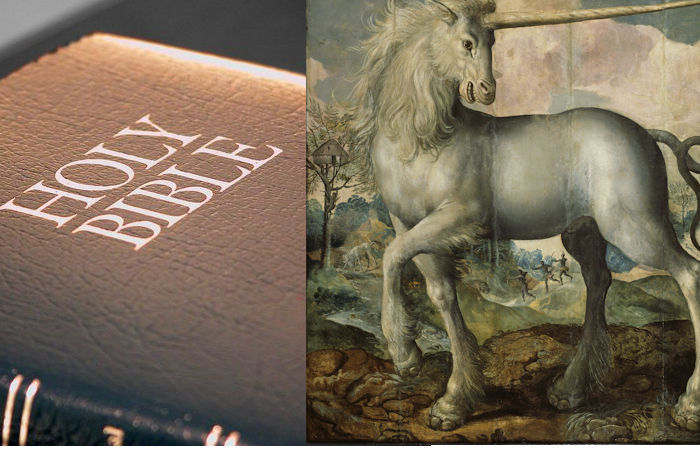The Unicorn In The Bible Was An Oryx – Ancient Translation Mistake
Ellen Lloyd - AncientPages.com - The unicorn is a legendary animal that has fascinated people for ages. Depictions of this magical and beautiful animal have been found on ancient seals, and early Greek writers believed the unicorn originated from India.
During the Middle Ages and Renaissance, people were incredibly interested in this mysterious creature no one had seen. As discussed in our previous article on Ancient Pages, Vikings used the opportunity and started selling faked unicorn horns and fooled Europeans with their bluff for hundreds of years.
Being in possession of a unicorn horn was everyone’s desire, but hardly possible due to the high price. It was believed that the alicorn, the horn itself, and the substance it was made of held magical and medicinal properties. Even the great painter Leonardo da Vinci was fascinated by the unicorn and wrote about it in his notebooks.
The Holy Bible. Credit: Kevin Probst - Public Domain - Unicorn by Maerten de Vos (1532–1603). Credit: Public Domain
Knowledge of the unicorn came from ancient Greek authors and the Bible, but no one knew the magical animal had been misidentified.
The Bible mentions the unicorn seven times, but only by mistake.
The mistake happened long before the birth of Christianity. The Old Testament was originally composed in Hebrew.
In 250 B.C., Ptolemy II Philadelphus, the second King of Egypt's Greek period, ordered 72 elders to translate the sacred Hebrew texts into Greek. That Greek translation is called the Septuagint. During the translation, the Jews encountered a problem. Their texts contained several references to an animal called "Re'em".
Re’em is the Hebrew name for oryx leucoryx or oryx, but the Jewish ancient scholars were confused by the descriptions in the Old Testament.
Left: Virgin Mary holding the unicorn (c. 1480), detail of the Annunciation with the Unicorn Polyptych, National Museum, Warsaw. Credit: Public Domain - Right: Maiden with Unicorn, tapestry, 15th century (Musée de Cluny, Paris). Credit: Public Domain
Modern Bible scholars believe that the Jewish texts are likely to refer to the two-horned oryx. Oryx leucoryx was once a lord of the entire Middle East. Its domain embraced most of the Land of Israel, but during the reign of King Ptolemy II Philadelphus, it had already been extinct in North Africa and the Middle East.
The original Jewish texts mention nothing about the animal having a horn, but the King's scribe chose, despite this, to call the animal monoceros, which can be translated into "a horn". The translation was continued when the Jewish texts became the Old Testament.
Unicorns still captivate modern people, and scientists have tried to find proof of their existence. Some years ago, a unicorn fossil was discovered in Siberia. The discovery caused a sensation. Scientists said unicorns were in fact real, but they looked slightly different from what we imagine today.
Written by Ellen Lloyd – AncientPages.com
Copyright © AncientPages.com All rights reserved. This material may not be published, broadcast, rewritten or redistributed in whole or part without the express written permission of AncientPages.com
More From Ancient Pages
-
 1,600-year-old Roman mosaics from ancient Serdica discovered in Sofia, Bulgaria
Artifacts | Aug 30, 2015
1,600-year-old Roman mosaics from ancient Serdica discovered in Sofia, Bulgaria
Artifacts | Aug 30, 2015 -
 Were The Knights Templar Guilty Or Innocent Of The Crimes Laid Against Them?
Featured Stories | Dec 24, 2020
Were The Knights Templar Guilty Or Innocent Of The Crimes Laid Against Them?
Featured Stories | Dec 24, 2020 -
 Graveyards Of Ancient British And French Giants Revealed In Old Documents And Journals
Featured Stories | Jul 4, 2020
Graveyards Of Ancient British And French Giants Revealed In Old Documents And Journals
Featured Stories | Jul 4, 2020 -
 Mysterious Manuscript 512 Reveals Lost Ancient City Hidden In The Amazon Jungle
Featured Stories | Jan 28, 2018
Mysterious Manuscript 512 Reveals Lost Ancient City Hidden In The Amazon Jungle
Featured Stories | Jan 28, 2018 -
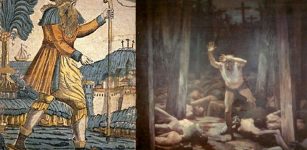 Legend Of The Immortal Wandering Jew Cursed By Jesus
Biblical Mysteries | Jul 17, 2018
Legend Of The Immortal Wandering Jew Cursed By Jesus
Biblical Mysteries | Jul 17, 2018 -
 Calçoene – Amazon Stonehenge And The Mysterious Amapán Megalithic Culture
Civilizations | Feb 14, 2018
Calçoene – Amazon Stonehenge And The Mysterious Amapán Megalithic Culture
Civilizations | Feb 14, 2018 -
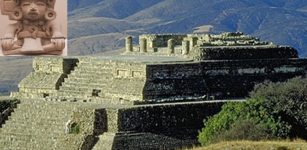 Hidden Structure Detected In Monte Albán, Ancient Metropolis Of Mexican Zapotec Culture
Archaeology | Dec 3, 2020
Hidden Structure Detected In Monte Albán, Ancient Metropolis Of Mexican Zapotec Culture
Archaeology | Dec 3, 2020 -
 Who Was The Mysterious Spitalfields Roman Noblewoman Dressed In Silk Found In A Sarcophagus In London?
Archaeology | Dec 21, 2020
Who Was The Mysterious Spitalfields Roman Noblewoman Dressed In Silk Found In A Sarcophagus In London?
Archaeology | Dec 21, 2020 -
 Extremely Rare Roman Cavalry Parade Mask Discovered In Romania
Archaeology | Feb 8, 2023
Extremely Rare Roman Cavalry Parade Mask Discovered In Romania
Archaeology | Feb 8, 2023 -
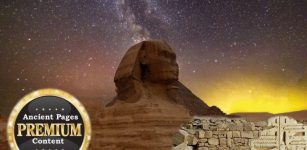 Secrets Of The Lost Tomb X – Mysterious Manuscripts And Strange Engravings – Part 1
Featured Stories | Apr 9, 2019
Secrets Of The Lost Tomb X – Mysterious Manuscripts And Strange Engravings – Part 1
Featured Stories | Apr 9, 2019 -
 Samurai Swords: Katana And Wakizashi And Their Long Tradition
Ancient Traditions And Customs | Aug 6, 2018
Samurai Swords: Katana And Wakizashi And Their Long Tradition
Ancient Traditions And Customs | Aug 6, 2018 -
 The Black Obelisk Of Shalmaneser III – Great Assyrian Ruler
Artifacts | Dec 29, 2016
The Black Obelisk Of Shalmaneser III – Great Assyrian Ruler
Artifacts | Dec 29, 2016 -
 What Is The Codex Sinaiticus And What Does It Mean?
Ancient History Facts | Feb 5, 2019
What Is The Codex Sinaiticus And What Does It Mean?
Ancient History Facts | Feb 5, 2019 -
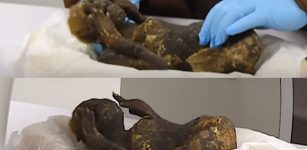 Mysterious Mermaid Mummy Investigated By Scientists
News | Feb 22, 2022
Mysterious Mermaid Mummy Investigated By Scientists
News | Feb 22, 2022 -
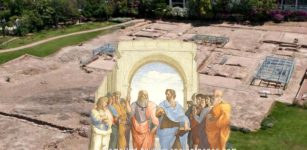 Aristotelian Thought Is Being Revived In Lyceum – Ancient School Founded By The Greek Philosopher
News | Jan 30, 2023
Aristotelian Thought Is Being Revived In Lyceum – Ancient School Founded By The Greek Philosopher
News | Jan 30, 2023 -
 Isle Of May Was A Pictish Healing Center – Monks Used Herbs To Treat Sick And Dying People
Archaeology | Feb 16, 2018
Isle Of May Was A Pictish Healing Center – Monks Used Herbs To Treat Sick And Dying People
Archaeology | Feb 16, 2018 -
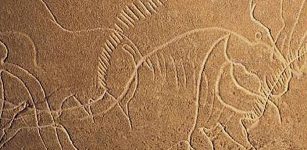 French Grotte de Cussac Cave Reveals Secrets On Life And Death 25,000-30,000 Years Ago
Archaeology | Jun 22, 2020
French Grotte de Cussac Cave Reveals Secrets On Life And Death 25,000-30,000 Years Ago
Archaeology | Jun 22, 2020 -
 Kingdom Of Mitanni: Forgotten For Millennia But Once Great Power Of Ancient West Asia In 2000 BC
Featured Stories | Jun 20, 2023
Kingdom Of Mitanni: Forgotten For Millennia But Once Great Power Of Ancient West Asia In 2000 BC
Featured Stories | Jun 20, 2023 -
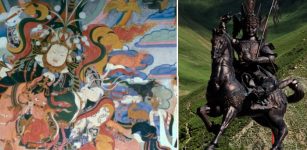 Legendary Epic Of King Gesar Who Descended From Heaven And The Ancient Tarna Monastery
Featured Stories | Nov 20, 2021
Legendary Epic Of King Gesar Who Descended From Heaven And The Ancient Tarna Monastery
Featured Stories | Nov 20, 2021 -
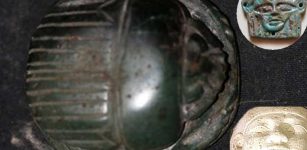 Amulets, Figurines Discovered In Recently Unearthed Limestone Sarcophagus In Minya, Egypt
Archaeology | Oct 15, 2020
Amulets, Figurines Discovered In Recently Unearthed Limestone Sarcophagus In Minya, Egypt
Archaeology | Oct 15, 2020

